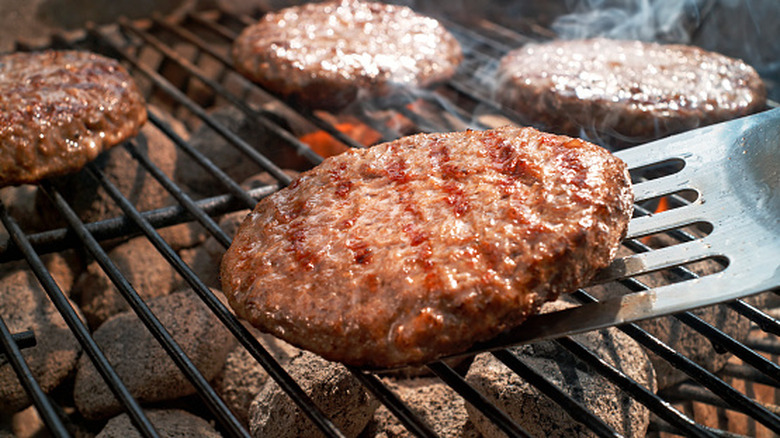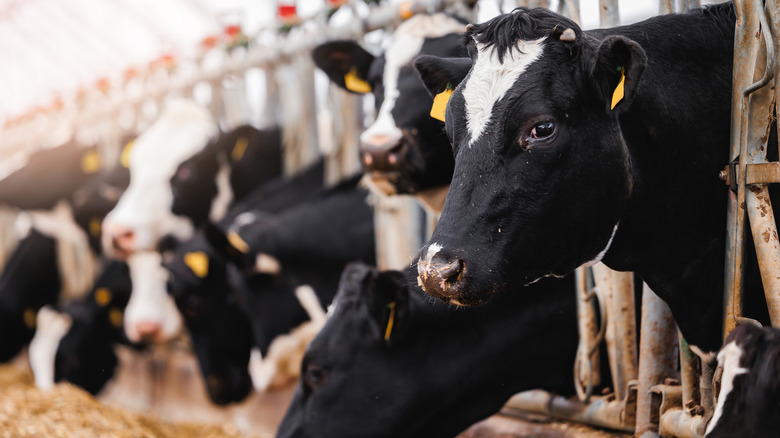The Disturbing Number Of Cows That May Be In One Store-Bought Burger Patty
When you bite into a juicy burger from your favorite American burger chain or even the grocery store's butcher section, you probably assume it came from just one cow. One cow, one burger: sounds logical, right? But the truth behind how ground beef is processed and distributed reveals something far more disturbing: that single patty may contain meat from dozens, even hundreds, of different cows. If that fact doesn't immediately make you go vegetarian, read on.
Sadly, that beef patty didn't come from your neighborhood friendly farmer. It came from a factory. Industrial meat processing is built for efficiency and profit, not transparency or sustainability. In the U.S. and many other countries, large-scale meat producers grind together meat scraps from many carcasses to create a uniform ground beef. These pieces can come from different parts of the country (or even the world!) and are combined to meet fat content and texture requirements. This process, called "meat commingling," means that a single burger patty can contain the flesh from up to 1,000 different cows.
This kind of extreme "meat blending" raises some serious health and ethical concerns. From a food safety perspective, it makes tracing sources of contamination extremely difficult. For example, when there's yet another outbreak of E. coli infecting ground beef, investigators struggle to track the original source, since just one batch can be linked to a hundred different animals and locations. Yet somehow, American's love of ground beef continues, even though we've had countless beef recalls that affected millions.
Factory farming at its worst
Yet another beefy negative is that our food supply chain is rather nebulous. Cows from different farms, feedlots, and even countries may be used in the same batch of ground beef, making it nearly impossible for us to know where our food comes from. Some cows may have been raised on pastures; others may have lived in overcrowded feedlots, treated with growth hormones and antibiotics. Perhaps that was another reason why Anthony Bourdain never ordered ground beef-based dishes at restaurants.
The beef industry slaughters roughly 30 million cows in the U.S. each year. So while a single cow can produce hundreds of pounds of meat, the economics of meat processing mean that meat from multiple animals is more profitable to blend together. If you really want to know where your meat is coming from, you'll have to do some homework. Check out your local farmers market, patronize your family-owned butcher shop, or look for a direct-to-consumer cattle ranch. As far as fast food chains go, fuhgeddaboudit. They especially rely on enormous supply chains to meet their burger demands.
Knowing that your grocery store's frozen beef patty might be a literal patchwork of dozens of cows changes how we think about something as simple as a burger. It should challenge us to ask where our food comes from, how it's made, and what we're giving up when we want cheap food and convenience.

